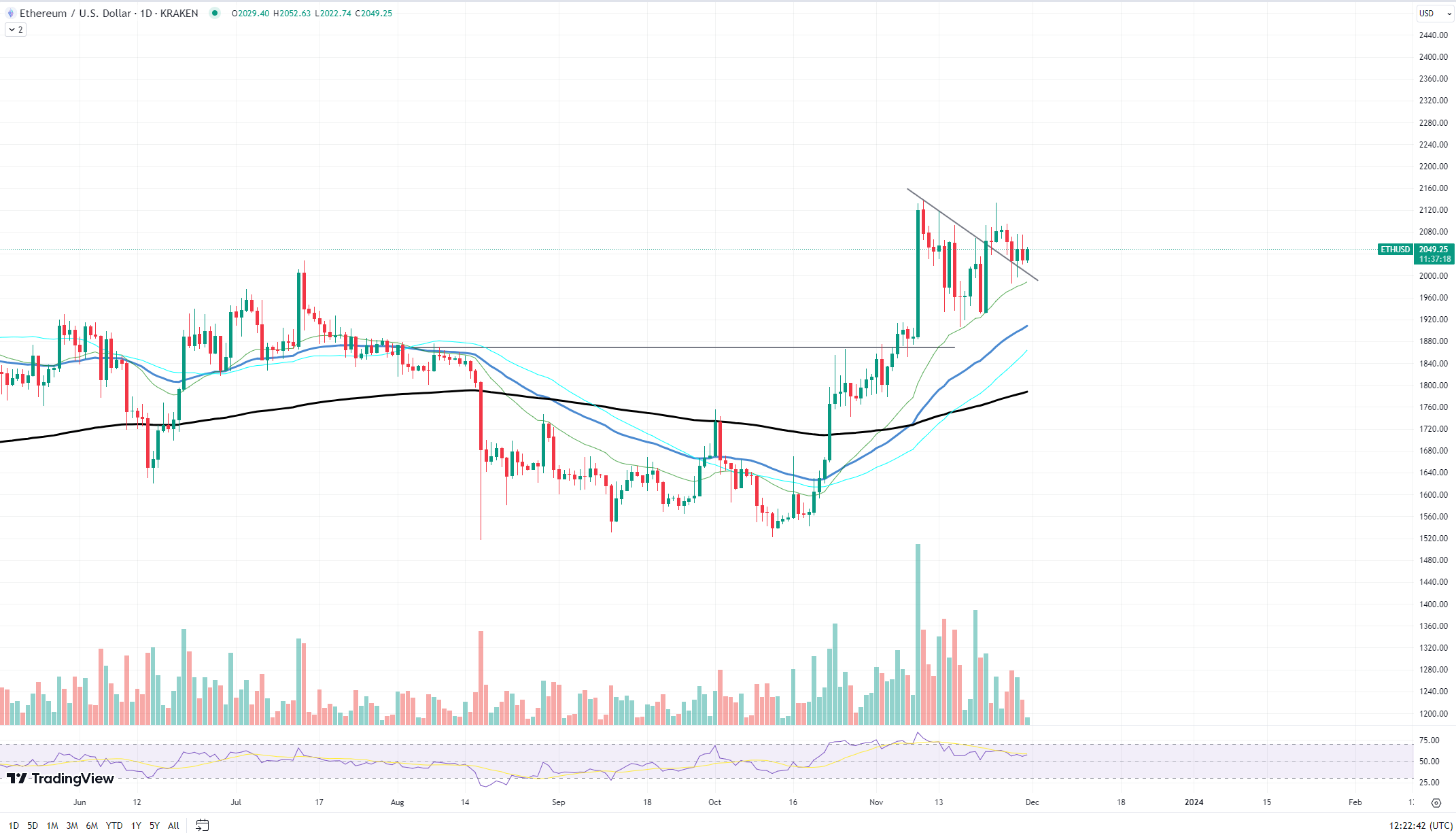Ethereum's market dynamics are often a tale of large players whose trades can signal shifts in market sentiment. Recently, a whale transaction caught the eye of many, as 3,150 ETH, valued at approximately $6.37 million, were sold at an average price of around $2,023, netting a substantial profit from an earlier purchase of 2,762 ETH at $1,825 each. This move has prompted discussion among traders: is it time to take profits on Ethereum?
The Ethereum chart reveals a critical juncture in price action. After a period of bullish momentum, Ethereum is now testing local resistance levels, creating a moment of decision for investors. The current resistance, formed near the $2,050 mark, is a crucial threshold that has previously prompted sell-offs, suggesting that traders are eyeing this level to secure gains.

Conversely, the support levels paint a picture of potential bounce-back zones. The first significant support is visible near the $1,950 level, aligning with the 50-day moving average. This moving average has historically acted as a dynamic support, propelling prices upward upon contact. A break below this, however, could see Ethereum's price target the next support at approximately $1,850, where previous demand coalesced to halt bearish runs.
The probability of a price reversal hinges on the market's reaction to these critical technical levels. A convincing break above the current resistance could invalidate the bearish thesis, potentially leading to a continuation of the upward trend. However, recent whale activity suggests that some large holders are starting to realize profits, potentially adding to the selling pressure at this price threshold.
Volume trends also provide insight, with a notable decrease in trading volume suggesting that the current price level may be unsustainable in the short term. Combined with the whale's cashout, it could signal a broader sentiment shift among investors, leading to increased volatility and a possible price correction.
 u.today
u.today
